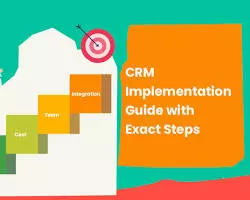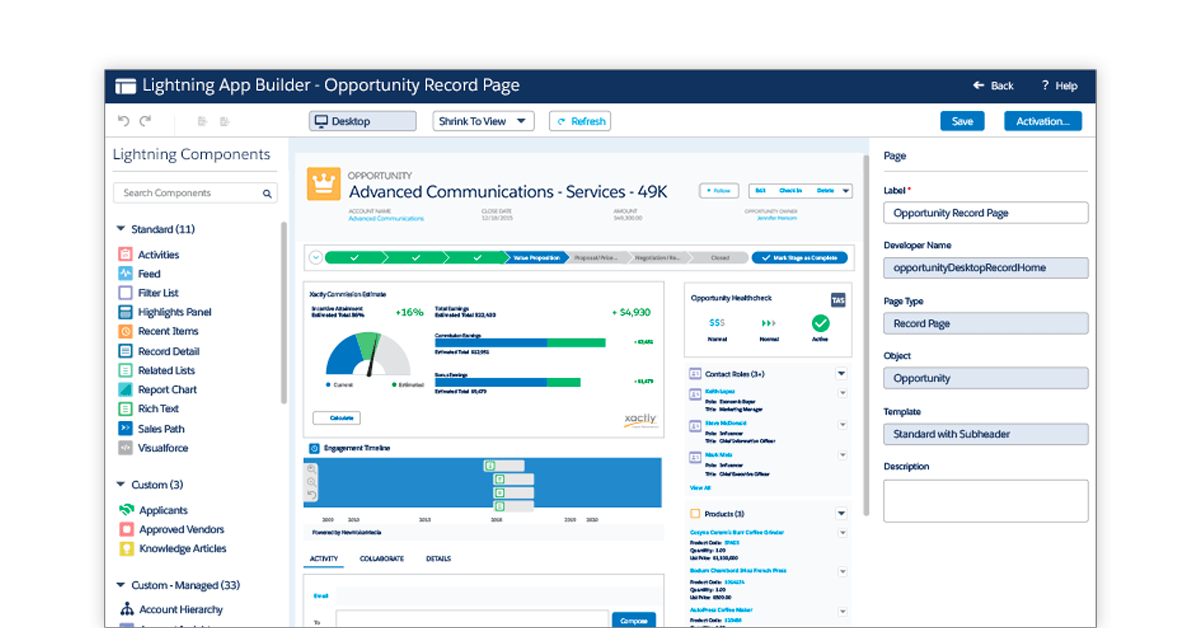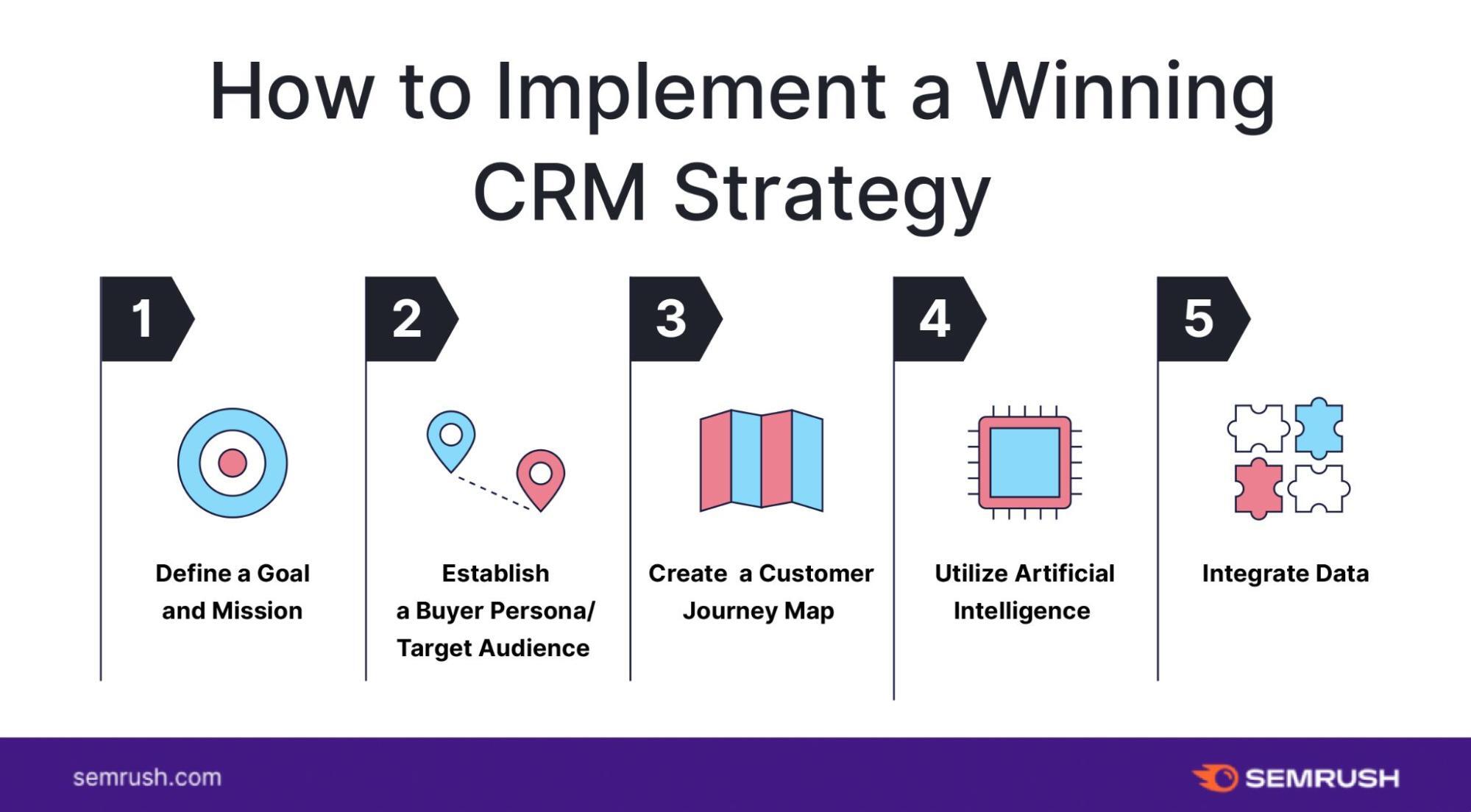
Small Business CRM Implementation: A Step-by-Step Guide to Success
Embarking on the journey of implementing a Customer Relationship Management (CRM) system is a pivotal decision for any small business. It’s a move that can revolutionize how you interact with your customers, streamline your operations, and ultimately, boost your bottom line. But the path to CRM success isn’t always straightforward. That’s why we’ve crafted this comprehensive guide, designed to lead you through every stage of CRM implementation, ensuring a smooth transition and maximizing your investment.
Understanding the Essence of CRM for Small Businesses
Before diving into the ‘how-to,’ let’s clarify the ‘why.’ CRM isn’t just about fancy software; it’s a philosophy centered on building and nurturing customer relationships. For small businesses, this is particularly crucial. Your customers are the lifeblood of your company, and a CRM system helps you:
- Centralize Customer Data: Forget scattered spreadsheets and lost emails. A CRM centralizes all customer information in one accessible location, allowing you to understand their needs, preferences, and purchase history at a glance.
- Enhance Communication: CRM enables personalized and targeted communication, whether it’s email campaigns, phone calls, or social media interactions.
- Improve Sales Efficiency: By automating tasks and providing valuable insights, CRM empowers your sales team to close deals faster and more effectively.
- Elevate Customer Service: Quickly access customer data and history, providing prompt and efficient support, leading to increased customer satisfaction.
- Gain Actionable Insights: CRM offers valuable data analytics, allowing you to identify trends, understand customer behavior, and make data-driven decisions.
In essence, CRM helps you move from reactive to proactive customer management, fostering loyalty and driving sustainable growth.
Step 1: Define Your Goals and Requirements
The first and arguably most important step is to define your objectives. What do you hope to achieve with a CRM system? Are you primarily focused on improving sales, enhancing customer service, or streamlining marketing efforts? Your goals will dictate the features you need and the CRM system that’s right for you.
Consider these questions:
- What are your current pain points? Identify the challenges you face in managing customer relationships. Are you struggling with data silos, inefficient communication, or a lack of sales visibility?
- What are your key performance indicators (KPIs)? Define the metrics you’ll use to measure the success of your CRM implementation. Examples include sales growth, customer retention rate, and customer satisfaction scores.
- What features are essential? Create a list of must-have features based on your goals and pain points. This might include contact management, sales automation, marketing automation, customer support ticketing, or reporting and analytics.
- Who will be using the CRM? Determine which team members will be using the system and their specific needs. Sales, marketing, and customer service teams will have different requirements.
By clearly defining your goals and requirements, you’ll be able to select a CRM system that aligns with your business needs and sets you up for success.
Step 2: Research and Select the Right CRM System
With your goals and requirements in hand, it’s time to explore the CRM landscape. The market is flooded with options, from basic contact management tools to comprehensive platforms with a wide array of features. The key is to find the system that best fits your business size, budget, and specific needs.
Consider these factors when researching CRM systems:
- Ease of Use: Choose a system that’s intuitive and easy to learn. A complex CRM will require extensive training and may not be readily adopted by your team.
- Features: Ensure the system offers the features you need, such as contact management, sales automation, marketing automation, customer support, and reporting.
- Scalability: Select a CRM that can grow with your business. As your company expands, you’ll need a system that can handle increased data volume and user numbers.
- Integrations: Consider how the CRM integrates with other tools you use, such as email marketing platforms, accounting software, and social media channels.
- Pricing: CRM pricing models vary. Some systems offer subscription-based pricing, while others offer a one-time purchase. Consider the total cost of ownership, including implementation, training, and ongoing maintenance.
- Support and Training: Make sure the CRM vendor offers adequate support and training resources to help you get started and troubleshoot any issues.
- Reviews and Testimonials: Research the vendor’s reputation and read customer reviews to gauge their satisfaction with the system.
Some popular CRM systems for small businesses include:
- HubSpot CRM: A free, user-friendly CRM with robust features for sales and marketing.
- Zoho CRM: A comprehensive CRM with a wide range of features and affordable pricing plans.
- Salesforce Essentials: A simplified version of Salesforce designed for small businesses.
- Pipedrive: A sales-focused CRM with a visual interface and pipeline management features.
- Freshsales: A CRM with built-in phone, email, and chat features.
Take your time to evaluate different options and choose the system that best aligns with your needs and budget.
Step 3: Data Migration and Preparation
Once you’ve selected your CRM system, it’s time to migrate your data. This involves transferring your existing customer data from spreadsheets, databases, or other systems into the new CRM. Data migration can be a complex process, so careful planning and execution are essential.
Here’s a breakdown of the data migration process:
- Data Cleaning: Before migrating your data, clean it up. This involves removing duplicate records, correcting errors, and standardizing data formats.
- Data Mapping: Map your existing data fields to the corresponding fields in your new CRM. This ensures that your data is accurately transferred.
- Data Import: Import your data into the CRM. Most CRM systems offer data import tools that allow you to upload data from spreadsheets or other files.
- Data Validation: After importing your data, validate it to ensure that all data has been transferred correctly.
- Data Security: Protect your data during the migration process. Implement security measures to prevent data breaches and unauthorized access.
Consider the following during data preparation:
- Data Backup: Always back up your existing data before starting the migration process. This ensures that you have a copy of your data in case anything goes wrong.
- Data Format: Ensure that your data is in a format that’s compatible with your CRM system. If necessary, convert your data to a compatible format before importing it.
- Data Segmentation: Segment your data into logical groups to make it easier to manage and analyze.
Data migration is a critical step in CRM implementation. By taking the time to prepare and execute the migration process carefully, you can ensure that your data is accurate, complete, and ready to use.
Step 4: Customization and Configuration
Most CRM systems offer customization options to tailor the system to your specific business needs. This involves configuring the system’s features, settings, and workflows to match your processes. Customization is crucial for ensuring that the CRM is a good fit for your business and that your team can effectively use it.
Here are some common customization options:
- Adding Custom Fields: Add custom fields to store data that’s specific to your business, such as product details, industry information, or lead sources.
- Customizing Workflows: Create custom workflows to automate tasks and streamline your processes. For example, you can create a workflow to automatically send a welcome email to new leads or to assign tasks to team members.
- Configuring User Roles and Permissions: Define user roles and permissions to control who can access and modify data within the CRM. This ensures that sensitive data is protected and that team members can only see the information they need.
- Integrating with Other Systems: Integrate the CRM with other tools you use, such as email marketing platforms, accounting software, and social media channels.
- Branding: Customize the CRM’s appearance to match your company’s branding.
During configuration, think about:
- User Interface: Customize the user interface to make it easy for your team to navigate and use the system.
- Data Validation Rules: Implement data validation rules to ensure that data is entered accurately and consistently.
- Notifications and Alerts: Set up notifications and alerts to keep your team informed of important events, such as new leads, upcoming deadlines, or customer interactions.
Customization is an ongoing process. As your business evolves, you may need to adjust your CRM configuration to meet your changing needs.
Step 5: Training and Onboarding
Implementing a CRM system is only half the battle. The next critical step is to train your team on how to use the system effectively. Proper training ensures that your team understands the CRM’s features, can use it to manage customer relationships, and adopts it as part of their daily workflow.
Consider these training strategies:
- Develop a Training Plan: Create a training plan that outlines the training objectives, content, and schedule.
- Provide Comprehensive Training: Offer comprehensive training that covers all aspects of the CRM, including its features, functionality, and best practices.
- Use a Variety of Training Methods: Use a variety of training methods, such as in-person workshops, online tutorials, and on-the-job training.
- Create User Guides and Documentation: Develop user guides and documentation to help your team understand how to use the CRM.
- Provide Ongoing Support: Provide ongoing support to your team to answer their questions and address any issues they may encounter.
- Encourage Adoption: Encourage your team to use the CRM by highlighting its benefits and providing positive reinforcement.
Effective onboarding involves:
- User Accounts: Create user accounts for each team member and assign appropriate roles and permissions.
- Access and Permissions: Grant access to the CRM and ensure that each user has the necessary permissions to perform their tasks.
- Initial Setup: Guide your team through the initial setup process, including logging in, setting up their profiles, and customizing their dashboards.
Training and onboarding are essential for ensuring that your team embraces the CRM and uses it to its full potential.
Step 6: Go-Live and Monitoring
After completing the data migration, customization, and training, it’s time to go live with your CRM. This is the moment when your team starts using the system to manage customer relationships. However, the implementation process doesn’t end here. Ongoing monitoring and optimization are crucial for ensuring that the CRM is delivering the desired results.
During the go-live phase, consider these points:
- Phased Rollout: Consider a phased rollout, where you gradually introduce the CRM to your team. This allows you to identify and address any issues before fully deploying the system.
- User Feedback: Gather feedback from your team on their experience using the CRM. This feedback can help you identify areas for improvement.
- Performance Monitoring: Monitor the system’s performance and track key metrics, such as sales growth, customer retention, and customer satisfaction.
- Data Accuracy: Regularly review your data to ensure its accuracy and completeness.
- Workflow Review: Review your workflows to ensure they are efficient and effective.
After implementation, it’s important to:
- Regular Audits: Conduct regular audits of your CRM data to ensure its accuracy and completeness.
- Performance Analysis: Analyze your CRM’s performance to identify areas for improvement.
- Workflow Optimization: Continuously optimize your workflows to improve efficiency and productivity.
By continuously monitoring and optimizing your CRM, you can ensure that it remains a valuable asset to your business.
Step 7: Integration and Optimization
Integrating your CRM with other business tools is a critical step in maximizing its value. This allows you to streamline your workflows, automate tasks, and gain a more holistic view of your customer data. Integration can also help you to improve your data accuracy and reduce manual data entry.
Here are some common integrations:
- Email Marketing Platforms: Integrate your CRM with your email marketing platform to automate email campaigns, track email performance, and personalize your messaging.
- Accounting Software: Integrate your CRM with your accounting software to streamline your sales and financial processes.
- Social Media Channels: Integrate your CRM with your social media channels to track social media interactions, manage social media leads, and gain insights into customer sentiment.
- Customer Support Software: Integrate your CRM with your customer support software to provide a seamless customer experience.
- E-commerce Platforms: Integrate your CRM with your e-commerce platform to track customer orders, manage customer data, and personalize your marketing efforts.
Ongoing optimization involves:
- Automation: Automate repetitive tasks, such as data entry, email sending, and task assignments, to improve efficiency and productivity.
- Reporting and Analytics: Use reporting and analytics to track key metrics, identify trends, and make data-driven decisions.
- Workflow Refinement: Continuously refine your workflows to improve efficiency and productivity.
- Data Quality: Regularly review your data to ensure its accuracy and completeness.
By integrating your CRM with other business tools and continuously optimizing its performance, you can maximize its value and drive sustainable growth.
Common Pitfalls to Avoid
While CRM implementation offers significant benefits, there are potential pitfalls to be aware of. Avoiding these common mistakes can help you ensure a successful implementation.
- Lack of Planning: Failing to define your goals, requirements, and selection criteria can lead to choosing the wrong CRM system and a failed implementation.
- Poor Data Quality: Inaccurate or incomplete data can undermine the value of your CRM. Clean and validate your data before migrating it to the new system.
- Inadequate Training: Failing to provide adequate training can lead to low user adoption and underutilization of the CRM’s features.
- Insufficient Customization: Not customizing the CRM to match your business processes can lead to inefficiency and frustration.
- Resistance to Change: Resistance to change from your team can hinder the adoption of the CRM. Involve your team in the implementation process and address their concerns.
- Ignoring Customer Needs: Losing sight of the customer is a sure path to CRM failure. Always prioritize customer needs and use the CRM to enhance their experience.
- Trying to Do Too Much Too Soon: Avoid trying to implement all features at once. Start with the most important features and gradually add more as your team becomes comfortable with the system.
- Lack of Ongoing Support: Failing to provide ongoing support and maintenance can lead to problems down the line.
By being aware of these common pitfalls, you can proactively address them and increase your chances of CRM success.
The Benefits of a Successful CRM Implementation
A successful CRM implementation can bring a wealth of benefits to your small business, transforming how you operate and interact with your customers.
- Increased Sales: CRM helps you identify and nurture leads, close deals faster, and increase your sales revenue.
- Improved Customer Retention: By understanding your customers’ needs and preferences, you can provide better service and build stronger relationships, leading to increased customer retention.
- Enhanced Customer Service: CRM enables you to provide prompt and efficient customer support, leading to increased customer satisfaction.
- Improved Marketing ROI: CRM allows you to target your marketing efforts more effectively, leading to a higher return on investment.
- Increased Productivity: CRM automates tasks and streamlines your workflows, leading to increased productivity and efficiency.
- Better Decision-Making: CRM provides valuable data analytics, allowing you to make data-driven decisions.
- Improved Collaboration: CRM facilitates collaboration between team members, leading to improved communication and teamwork.
- Scalability: CRM can scale with your business, allowing you to manage your customer relationships as your company grows.
- Competitive Advantage: By implementing a CRM, you gain a competitive advantage by providing better customer service, streamlining your operations, and making better decisions.
These benefits translate into a more profitable and sustainable business. Investing in CRM implementation is an investment in your future.
Conclusion: Embracing the Future of Customer Relationships
Implementing a CRM system is a significant undertaking, but the rewards are well worth the effort. By following this step-by-step guide, you can navigate the implementation process successfully and unlock the full potential of CRM for your small business. Remember to define your goals, select the right system, prepare your data, customize the system to your needs, train your team, and continuously monitor and optimize your CRM. Embrace the future of customer relationships and watch your business thrive.
With the right CRM system and a well-executed implementation plan, your small business can build stronger customer relationships, drive sales growth, and achieve long-term success. So, take the leap, and start your CRM journey today!


